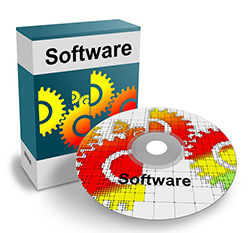 Getting new software for the office can be a trying process. Top quality programs like Photoshop can be prohibitively expensive for a small business when you need to outfit your whole office, and the free stuff is a bit of a crap shoot. Obviously, we have to recommend against pirating. Individuals using Sony Vegas or Adobe Illustrator without a license aren’t really taking a huge risk, but releasing professional work with pirated software is a recipe for a lawsuit that will wind up costing you quite a bit more than the licensing fees would have.
Getting new software for the office can be a trying process. Top quality programs like Photoshop can be prohibitively expensive for a small business when you need to outfit your whole office, and the free stuff is a bit of a crap shoot. Obviously, we have to recommend against pirating. Individuals using Sony Vegas or Adobe Illustrator without a license aren’t really taking a huge risk, but releasing professional work with pirated software is a recipe for a lawsuit that will wind up costing you quite a bit more than the licensing fees would have.
But then, the free and cheap alternatives bring their own risks. Check out some people’s Firefox and Google Chrome browsers and you’ll see about an inch of browser space and twelve inches of search bars, task bars and plugins. This is a problem you encounter when you’re not too picky about where you’re getting your free software. The problem is that it’s more or less legal to take any piece of open source software and add a ton of stuff to the install process that the user doesn’t need. They don’t even need to include viruses and adware if you’re actually choosing to do the auto-install without deselecting all the bloatware that comes with it.
If you can get your free software directly from the official website, then that’s always the best option. Unfortunately, sometimes the official website is long gone, in which case you will want to check some forums to see if anyone has posted a legit copy to a file sharing site.
A lot of torrents for pirated software carry viruses, spamware, adware and spybots, which is another reason why they can ultimately cost you in the long run. Getting a virus off of your laptop isn’t such a big deal. Getting a virus off of every laptop in your office, and out of all the software you’ve been distributing yourself, that’s another story.
If you see someone sharing freeware on social media, just don’t click the link unless the post comes from a verified account. People love to spread infected shareware and freeware on Twitter, Facebook and Youtube.
Basically it comes down to doing your research and getting your software from as close to the source as possible. Keep your security software up to date, don’t trust random links or Youtube spam, and don’t just click on the first download you see.





